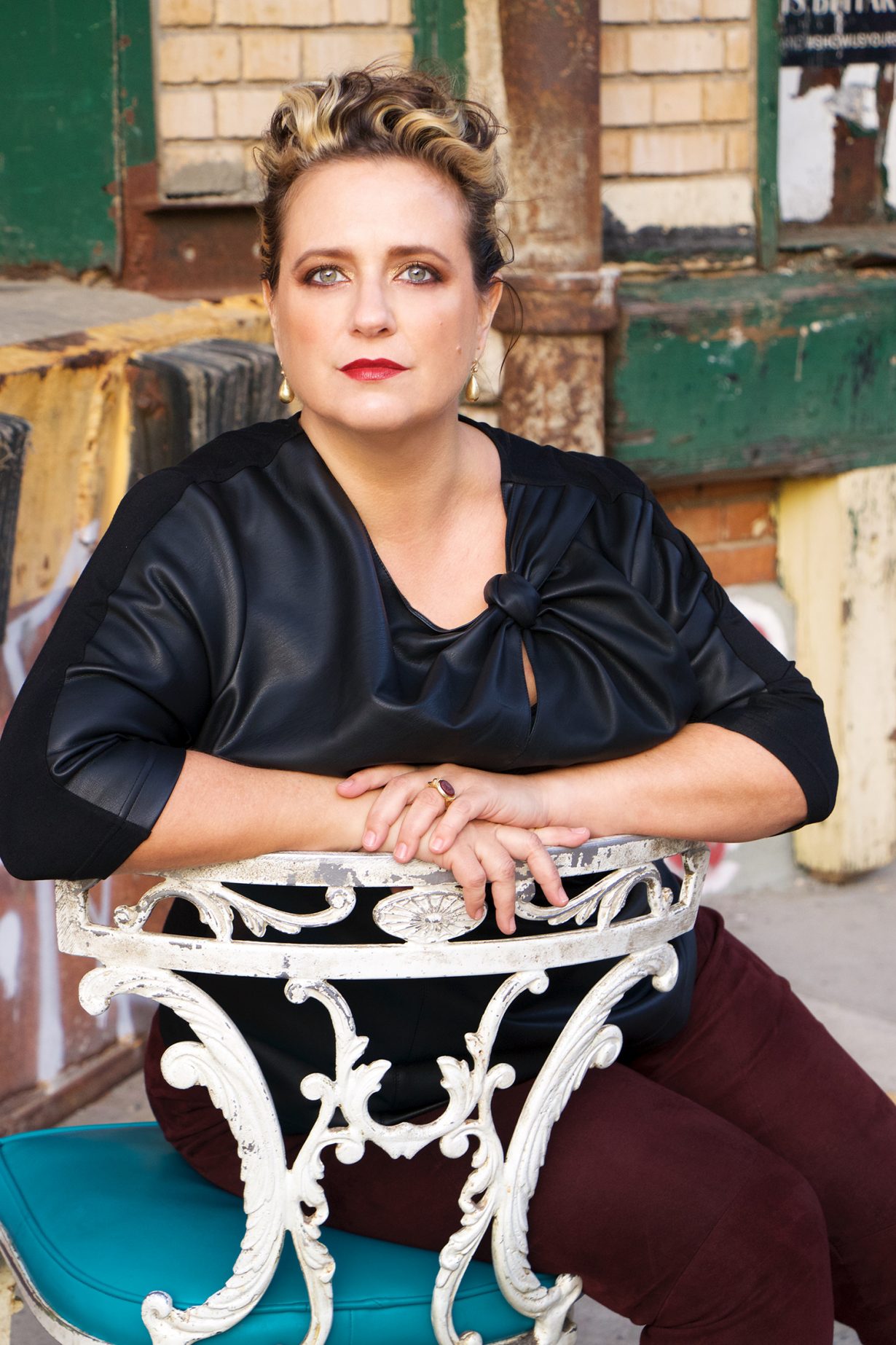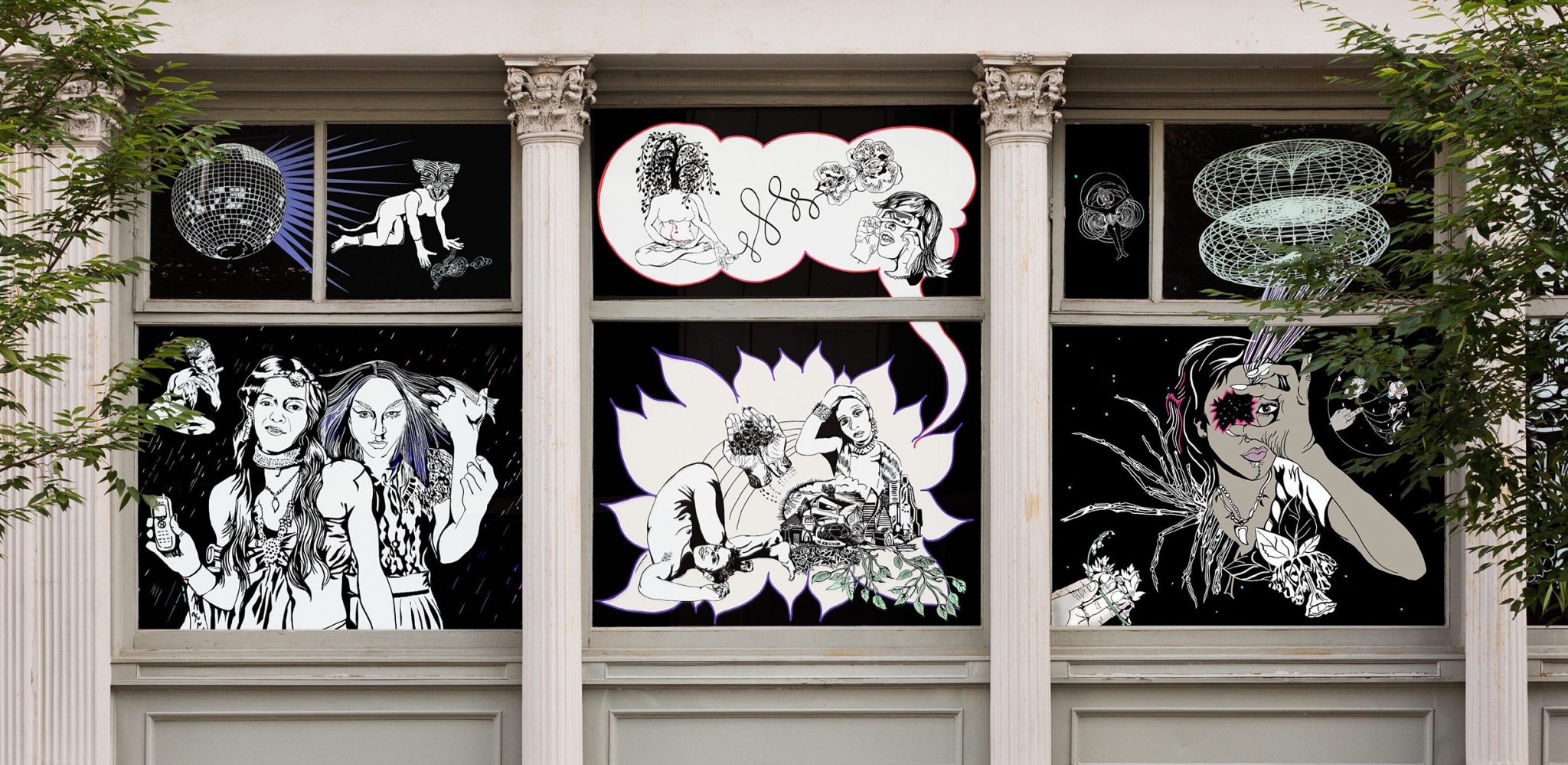Laura Raicovich is a curator and museum director known for her activism. Currently interim director of Leslie-Lohman, a New York museum dedicated to queer culture, she was previously director of the Queens Museum. She left in 2018 after a dispute with the institution’s board and New York City officials became a public controversy, in which she objected to the Israeli government using the museum for a political event featuring Vice President Mike Pence. Her next book, Culture Strike: Art and Museums in an Age of Protest, will be published by Verso in 2021.
ArtReview I’m going to start with a really critical question: what should a museum be?
Laura Raicovich I think you’re referring to the debate from ICOM [International Council of Museums] about how a museum should be defined. I use a response to that in my forthcoming book to help materialise how this idea of neutrality seeps into our ways of thinking and working and being without really being noticed. What’s poignant about the whole moment is that the new definition proposed by a group of ICOM members, who were trying to centre it on ideas of justice and equity, was seen as not neutral, whereas the previous definition, an institution that cares for objects, presents them to the public and functions as an educational body, is considered neutral.
Neither of those things are neutral, but that’s OK. What we’re really striving for is a way to look at how stories are told. If we look at museums or any cultural institution as a storytelling agency, the stories being told are by individuals who work inside the museum, by curators, educators and, of course, by artists.
I think that the reckoning of this moment has at its core this nonperception of the fact that museums have a point of view. Their unauthored or absolute or neutral positionality is just a profound myth.
AR I suppose it’s because the museum has this imagined neutral figure, who turns out to be an ‘old white guy’. You’re still the interim director at the Leslie-Lohman museum, correct?
LR That’s right. I was very clear, and so was the board, about the true interim nature of my role. I recognise that I have many queer colleagues inside museums, and very few of them are the directors of their institutions. For me, it was a real priority to say: this is the perfect stepping-stone from a smaller museum to a larger one, and so a queer person should really occupy this role. I will say that they’re pretty close to finding a permanent director.
AR Many museums have multiple audiences. Yours has a very clear remit, a particular audience and a particular founding story. Is that easier?
LR It is and it isn’t. The fact that it’s the only museum in the United States focused on queer art doesn’t mean that there aren’t enormous blind spots, which I think is very much part of the discussions we’ve been having as a staff, particularly after last spring’s murders of Black people by police in the US. Just because you have a particular focus as an institution, even when that focus is on a marginalised group, doesn’t mean you don’t have your own work cut out for you. People are more complex than a singular identity function, and it’s where the intersections of those identities fall that we have to really be able to look into.
I think all museums, no matter what flavour they are, have their own reckonings. One of the things that I’ve really come to around the protests and the demands that are being made of cultural institutions – institutions of all kinds, but in my case the focus is cultural – is that, these demands are being made by publics that care enough about these spaces to protest.
To say, “We want to be treated differently. We want this. We want that. We want X. We want Y.” That’s a form of extreme care. For those of us who work within institutions, and often feel beleaguered by those protests, we need to shift our perception of how those hit. I think that if we thought more broadly about how protest could be an entry into a far deeper conversation about what culture is, and how it is shared through cultural space, that we could really get somewhere.
AR How do you stop this becoming a culture war?
LR I don’t really know, but it’s important that we come at these questions from a collective position of discussion. At the risk of sounding overly earnest, I think we need real spaces for care, and culture can do that.
I think that, fundamentally, cultural space has to reinvent the way that it functions, from its fundraising models to its staffing models to its everything. We have to be willing to look at ourselves and understand that transformation doesn’t happen overnight. I think that the first thing that we have to do is radically slow down. In some senses, this particular moment with the pandemic has forced that, both through budgetary constraints and otherwise. It’s also brought out all of the inequity that we knew existed.

AR I’m reminded of something that Michael Rakowitz said to me in an interview about how pretty much every museum he’s ever shown in seemed to be building extensions, engaging in big capital projects, accepting money from dubious sources to fund ever more unsustainable growth, shows by global stars… Has the idea of localism become more resonant now that we’re not flying or whatever?
LR This is an interesting question, and it addresses two things. There’s the question of late capitalism, and its complete embodiment in museum culture as capital campaigns, massive building projects, faster, stronger, better, Marlboro-man style directorship, which I have to say is toxic.
Then, and it’s something that’s really resonating right now for me, there’s the connection between the hyperlocal and the international. At the Queens Museum, we could find somebody of every nationality in the UN within the borough, never mind the 135 different languages and dialects that are spoken. At Leslie-Lohman, the relationship between the hyperlocal and the international has really come to a very fine point during the pandemic, because as we moved a number of our live programmes to virtual spaces, we made contact with an international audience that I don’t think we’ve really imagined. We did an incredible programme with an artist named Shannon Finnegan called Alt-Text as Poetry in May, and over 500 people signed up for it. We had people in Uganda and Australia tuning in, never mind from all over the United States.
That’s an audience that the museum has never plugged into, because those people couldn’t necessarily come to the museum, right? Until confronted with this crisis moment, we just had no idea that somebody would log on in the middle of the night from Uganda to tune into one of our programmes.
That has shifted our thinking about how we connect with audiences, not only hyper- locally in New York by doing collaborations with local schools etc, and the work that we do with local artists, but also virtually, connecting us more profoundly on an international level, even without getting on a plane.
AR With museums and institutions everywhere facing a bleak economic future, is patronage still coming in?
LR My hope is that people really step up. Certainly, some organisations are going to disappear. There are already, especially, smaller to midsize organisations that are just not going to exist anymore.
I also think – and this is not a reflection on the ones that have not been able to sustain themselves – that it’s a moment for new institutions to be born. Anytime that you have the amount of creative energy that’s out there right now, engaged in culture and engaged in protest, things are going to grow out of that, and be profoundly different from what was created in the past.
There’s a reason that in New York many of the really cool organisations were founded in the early 1970s. It was a time of fiscal crisis in New York, it was a time when real estate was cheap. There were a lot of factors, don’t get me wrong. I don’t want to overly glamorise that period either.
But maybe we’re in another moment where the ideals of the protest can be embodied in a new set of cultural organisations that emerge from this moment. I would be really excited to see that.
In the US there needs to be a much larger conversation about what culture is, and what people want from it. I think the piece that’s really missing from the funding model in the US, and the reason that private individuals have had this outsize influence on cultural spaces, is because of the lack of federal public funding for culture in the US. There’s a rebalancing that has to happen. There’s so much that we lack in terms of government infrastructure on the federal level when you compare it to times culture was actually prioritised, like during the WPA [Works Progress Administration, founded under Franklin D. Roosevelt’s New Deal in the 1935]. The equivalent that was spent on culture during those few years of the WPA would be like a billion dollars a year in today’s dollars. That would be transformative.
AR As you say, the rich are still rich. However, do you feel there’s a reluctance now among patrons to donate to museums, given that their business interests will be scrutinised? Do you feel that museum patrons are becoming wary?
LR Honestly that hasn’t been my experience, but if it’s happening with certain individuals, I think that’s OK. There are some wealthy patrons willing to put up with the scrutiny, and plenty of other places for patrons who don’t want to be put under that level of scrutiny. I also think that there are different types of funders attracted to the arts at different times, which comes along with a rethinking on the institutional side about how governance, power and financial conditions are intermingled on the board. One of the major advantages that Leslie-Lohman Museum has is that the board is really diverse, and I don’t just mean ethnically and racially even, but diversity of types of people: journalists, writers, artists, people of different class positions.
That’s something we’re globally going to see more of, and we will see more of because people will understand the word ‘diversity’ as being about the diversity of experience.
AR To what extent should a patron influence an institution? I know you’ve set up a series of Zoom conversations, and that one of the first conversations will be about the postponed Philip Guston Now exhibition.
LR On a certain level, you can’t really have a show about Guston’s work and properly address the clan figures with an all-white curatorial team. That said, part of the reason that Helen [Molesworth] and I decided to plan this conversation is that we have unfixed views on the matter. I don’t know how you resolve it, and I also have other questions. I think part of the problem of the pandemic has been that we haven’t been able to really have a conversation beyond the hot take on Twitter or whatever, and I think that that’s really a disservice. That’s putting us at a disadvantage.
We have this distant polarisation around questions like this. Let’s talk about it. I really want to hear from people, because I know that people have been thinking about it, but they’re not thinking about it together, out loud.
ArtReview’s Power 100 – the annual ranking of the most influential people in art – is out now
